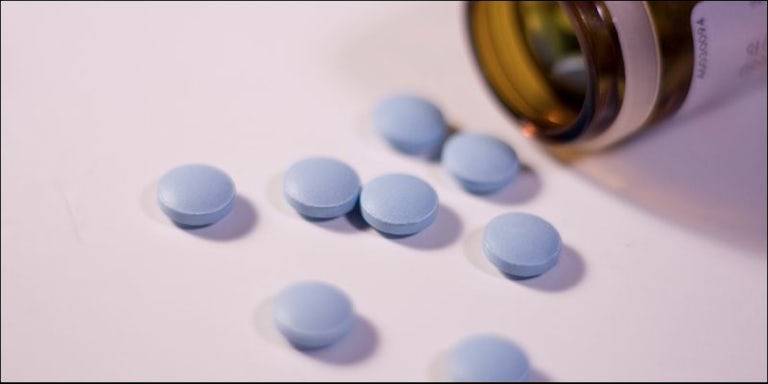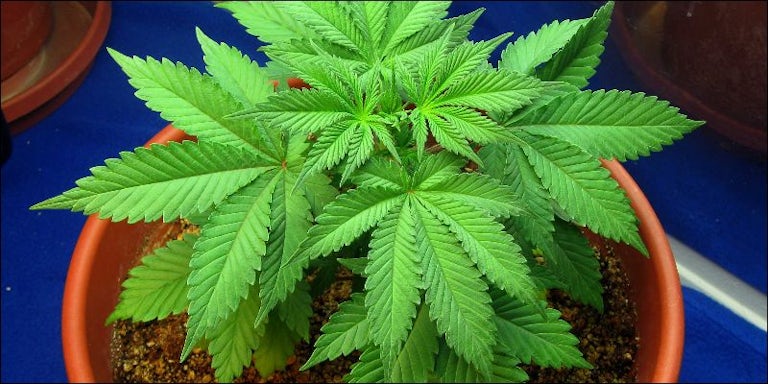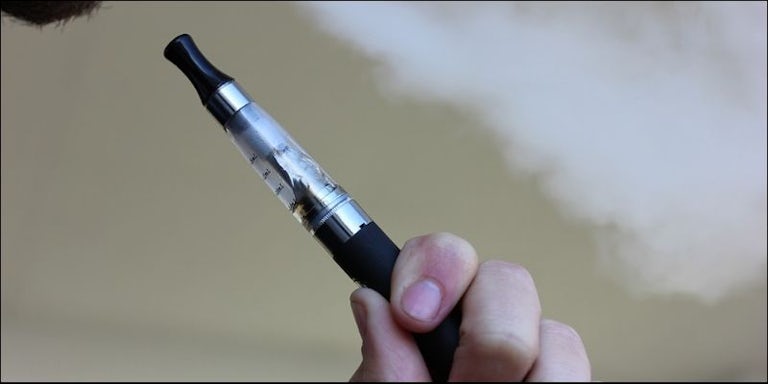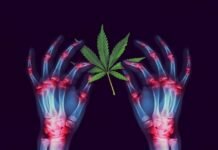
There’s a growing amount of evidence that suggests cannabis may be better for you as you grow older. But, does it really improve quality of life?
Let’s face it. As you get older, your body doesn’t work quite as well as is it did when you were young. You may find yourself sleeping less, feeling a little down, and struggling to get over chronic aches and pains. Moreover, by the time you are a senior or elderly adult, you may find that it is significantly more difficult to perform basic daily tasks. Whether you’re hoping to reduce your risk of age-related diseases or find relief for your elderly parent, here’s how cannabis improves the quality of life in aging adults.
Sleep
The older we get, the harder it is to get a good night’s sleep. This is unfortunate because quality sleep is essential if you want to live a long and healthy life. This is especially true if you are hoping to lower the risk of age-related neurodegenerative diseases like Alzheimer’s Disease.
Why is this? Turns out, some really important things happen in our brains while we sleep.
It was only very recently that scientists discovered the brain’s lymphatic system. In your body, the lymphatic system is a vital part of the immune system. It helps ward off sickness and remove waste. As crazy as it sounds, we only figured out that the
As crazy as it sounds, we only figured out that the brain has a lymphatic system last couple of years. Until this research was published in 2015, the scientific community thought that the brain lacked lymph vessels.
Turns out, they were wrong. Very wrong. So, what do these lymph vessels have to do with sleep? Well, at night your brain and body clean house. During this time, muscles and bones are repaired. Your body also pumps fluid into the brain to gently cleanse away unwanted debris.
Jeff Iliff at Oregon Health and Science University explained this process in an interview with NPR,
Changes in sleep habits may actually be setting the stage for the development of Alzheimer’s. […] What happens is that during deep sleep, the fluid that’s normally on the outside of the brain which is called cerebral spinal fluid, it’s a clean clear fluid, it actually begins to recirculate back into and through the brain along the outsides of blood vessels. – Iliff
This washing process seems to clear out toxins, including the neurotoxins that cause Alzheimer’s Disease. This is a very clear sign that healthy sleep habits may significantly impact your likelihood of developing this debilitating neurodegenerative disease.
Iliff’s team made these discoveries in rodent brains back in 2013. Yet, scientists from other institutions found these lymphatic vessels in humans last year.
Cannabis and deep sleep

So, now, what does all of this have to do with cannabis? It’s well known that the herb helps you sleep. But, there’s more to it than that. The plant actually helps you sleep in a very particular way. It increases the time you spend in deep sleep and decreases the time you spend in lighter sleep stages.
Deep sleep is the stage of the sleep cycle in which your body repairs itself and removes waste products. As we age, we spend less time in restorative deep sleep and more time in lighter stages of sleep. This means that our bodies are spending less time clearing out damaging waste products.
While we are younger, it is important to have a healthy balance between deep sleep and lighter sleep stages. Yet, when we’re older, we are getting too much of the light sleep and not enough of the kind of sleep that heals and cleanses.
For this reason, many aging adults feel tired and find themselves dosing off during the day. Yet, these nap times rarely put a person into a deep sleep and they tend to make it harder get quality sleep at night.
Sleep medications are commonly prescribed to aging adults, but they have high addiction potential and come with a host of side effects. Cannabis, on the other hand, extends deep sleep and has a high margin of safety.
Unfortunately, we can’t say for sure what impact the herb has on the brain’s lymphatic system as the research is too new. But, it is safe to say that this is a therapeutic area worth studying.
Stress and mental health

Seniors and elderly adults have it rough these days. It is becoming increasingly more common for aging adults to live alone at a time when they are more vulnerable to physical and mental health complications.
Recent evidence has shown that rates of drug abuse and addiction are on the rise in seniors from the boomer generation. These include prescription drug abuse as well as rising rates of alcohol consumption.
There are likely many reasons why aging adults turn to alcohol and other drugs, but chronic stress, depression, and loneliness are thought to be some of the major contributors.
Research from 2009 cited evidence that though elderly suicide rates are declining, older adults are still more likely to commit suicide. Suicide in older adults is also more closely linked to depression.
Here’s where cannabis comes in. It is well-known that the herb is a potent anti-depressant, especially when consumed in low doses. Researchers from the University of Buffalo have found that levels of endocannabinoids, our body’s natural marijuana, are lower in animal models of depression from chronic stress.
Further animal research has found that nonpsychoactive CBD is a fast-acting antidepressant, providing positive changes after a single dose. Common antidepressant medications can take as long as 6 weeks to kick in. The
The neuroprotective properties of the herb may also be beneficial for age-related depression, as neurobiological changes contribute to the condition.
Other more subjective benefits include laughter, improved sleep, and decreased pain levels. All of these factors greatly influence your mental health status. If left untreated, depression and chronic stress can significantly decrease your quality of life
Pain management

Older adults are more likely to experience pain than the general population. This isn’t surprising, as older adults are also more likely to suffer from osteoporosis, osteoarthritis, neurodegenerative diseases, and autoimmune conditions. All of these things can cause substantial pain.
Your body’s ability to repair itself also declines with age, making it more difficult to recover from injury and illness.
Cannabis and neuropathic pain

Though many of the medical benefits of cannabis are debated by medical professionals, pain is not among them. The herb may not be beneficial for acute pain, but chronic neuropathic pain is another story. In a randomized, crossover, clinical human trial, researchers tested whether or not cannabis improved pain in patients with HIV.
Cannabis with a mere 1 to 8% THC was smoked four times daily for 5 days. The participants were also tested with a placebo. The results were positive. This low-THC cannabis decreased pain by at least 30% compared to the placebo. Patients also reported improvements in mood and daily functioning.
Cannabis and inflammatory pain

Those with chronic inflammatory pain may also find relief with the herb. A 2014 study found that endocannabinoids play a role in osteoarthritis pain. Using animal models, researchers found that a synthetic cannabinoid successfully decreased pain signals associated with osteoarthritic pain. This finding led the study authors to conclude,
These new data support the further evaluation of the selective cannabinoid-based interventions for the treatment of osteoarthritis pain. – Dr. Victoria Chapman
Though not all aging adults may have HIV or osteoarthritis, the fact that compounds in a simple herb can ease away the pain in such serious conditions is astounding. When you need significant pain relief the alternatives to cannabis are typically opioid pain medication.
Not only are these medicines addictive, but they also come with uncomfortable side effects like vomiting, nausea, constipation, and intense sedation.
Interestingly enough, these side effects are conditions that cannabis can help. Certain types of cannabis may be sedative, but switching to a different strain can help you avoid uncomfortable drowsiness.
5 ways to use cannabis

No, you don’t have to sit around and get “high” to improve your quality of life with cannabis. While many people find consuming activated cannabis enjoyable, a psychoactive experience isn’t for everyone.
For many of older generations, decades of harsh stigma have caused them to turn a blind eye to the plant’s potential. Here is a brief overview the different ways aging and senior adults can ease into cannabis.
1. Medical cannabis oil

Medical cannabis oil a highly concentrated cannabis extraction. Basically, all of the cannabis resin is separated from the plant material. The result is a gooey black oil that has a wide variety of medicinal uses. Cancer patients who have opted to try medical cannabis treatments often work up to a full gram of this oil a day.
These high quantities of cannabis extract aren’t needed by the average joe. But, small doses of medical cannabis oil may be a preferable way for seniors to consume the herb. You can either plop a small bead of oil under your tongue or use it to fill empty pill capsules.
In small doses, you may not feel a significant psychoactive effect. However, the larger the dose, the more likely you are to feel a bit fuzzy. Personal experimentation is really the only way to figure out what dose feels best for you. But, if you’re adverse to THC, you can find nonpsychoactive cannabis oil as well.
Many dispensaries offer oils with various cannabinoid concentrations. You can find oil that is THC-dominant, CBD-dominant, or oil that contains a balanced mix of both cannabinoids. If you hoping to cut costs, you can also make your own using your favorite cannabis strains. You can find a recipe here.
2. Raw dietary cannabis
Cannabis is one interesting plant. When you heat it, it becomes psychoactive. That’s why people have taken to smoking the herb. However, there may be some benefit to leaving it raw.
As California doctor, William Courtney explains,
If you do heat [cannabis], than your dose limit is around 10mg. If you don’t heat it, if it’s raw, than your dose limit is 1 to 2, 000mgs. […] If it’s unheated, your dose can go up by a factor of 100 where it becomes much more effective as an antioxidant, anti-inflammatory, anti-diabetic, anti-ischemic, a lot of the more unusual properties, but it does lack the psychoactive.
Move over, kale. When left raw, cannabis is a vegetable. Both raw buds and leaves can be eaten as a type of superfood. Dr. Courtney recommends juicing or blending raw cannabis to get the most benefit from the herb. In the video above, he encourages those with age-related neurodegenerative disorders to blend their cannabinoids into a high-fat beverage.
3. Vaporization

For those who appreciate a psychoactive experience or find more effective relief from activated cannabis, vaporization is a healthy substitute for smoking. When you smoke cannabis, you burn the herb and inhale hot, ashy plant particles into your lungs. This can be irritating for those who are not accustomed to smoking.
Vaporization, however, involves heating either cannabis oils or dried bud at low temperatures. Vaporizers heat the herb just enough to melt the resin glands without combusting plant material. This means that you are inhaling a nice, smooth vapor rather than smoke. This also drastically cuts down on the distinctive cannabis scent.
You can purchase vaporizers that heat dried bud. Yet, many prefer pen vaporizers. A pen vape is like an eCig for cannabis. It is as small as a pen, and you can pick up refillable cartridges at a local dispensary.
4. Edibles

Edibles are a great way to make cannabis more approachable. To some, smoking and vaporization still gives off the impression that you are engaging in an unhealthy activity. Edibles, on the other hand, look just like any other food. For those who struggle with physical pain, insomnia, and aching joints, edibles provide much needed physical relief.
The effects of smoked or vaporized cannabis tend to only last a couple of hours. They are also more likely to promote a more mental experience. Though edibles also affect the mind, they deliver physical effects that are significantly stronger. The edible experience also lasts a lot longer and takes a while to kick in.
It is very easy to get carried away with edibles. A standard dose for an adult is considered 10 to 15mg of activated THC. Consumed in edible form, it may take anywhere from 30 minutes to 2 full hours before you feel the effects. Those new to edibles should start with low doses and avoid overeating.
5. Topical cannabis

Not only is topical cannabis great for your skin, but it can provide localized relief for aches and pains. Cannabis is a potent anti-inflammatory, meaning that it will cut down some of the pain and inflammation associated with age-related arthritis.
If you notice that you just aren’t moving around as well now that you’re getting older, cannabis creams and lotions may be just the thing to help you loosen up.
Another bonus? Topical cannabis is nonpsychoactive. Simply spreading a lotion on your skin won’t cause a mind-altering experience. Rather, the effects are contained to the area of application. Is your knee feeling a little stiff? Rub a little cannabis cream directly on the affected area.
There are a lot of ways that cannabis can improve your quality of life as you age. In terms of sleep, pain management, and mental health, the herb has a lot of potential. Though, admittedly, we’re a long way off from firm research on exactly how cannabis affects us as we grow older.
Whether you’re a little canna-curious yourself or you’re wondering if the plant is right for your elderly parent, cannabis is versatile and easy to incorporate into your routine. Many people find relief with the classic joint, yet others may prefer some concentrated CBD oil.
Regardless of how you use it, the plant really does become better with age.
Source: https://herb.co



